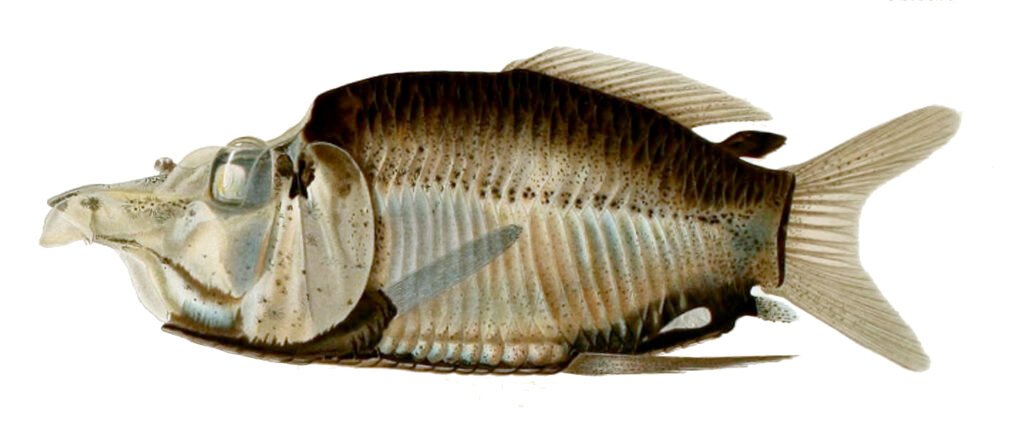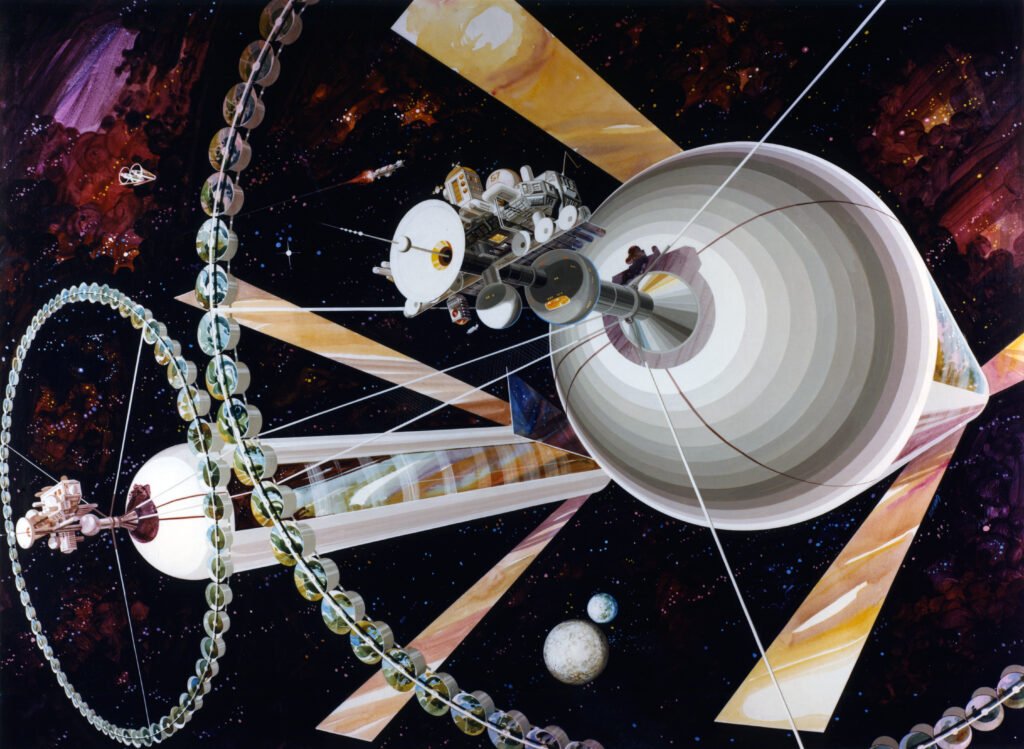In the lightless waters of the mid-ocean, there swims a fish that looks like a living periscope. Its head is a clear dome, and inside that dome sit two emerald tubes that swivel like twin telescopes. For decades, this animal was a rumor backed by damaged specimens and grainy notes from old trawls. Then remote cameras finally caught it alive, hovering calmly, eyes locked on the sky of the deep. The moment felt like opening a secret compartment in the ocean’s toolbox, where evolution keeps its strangest inventions. And what we discovered is changing how we think about vision, survival, and technology in places sunlight never reaches.
The Hidden Clues
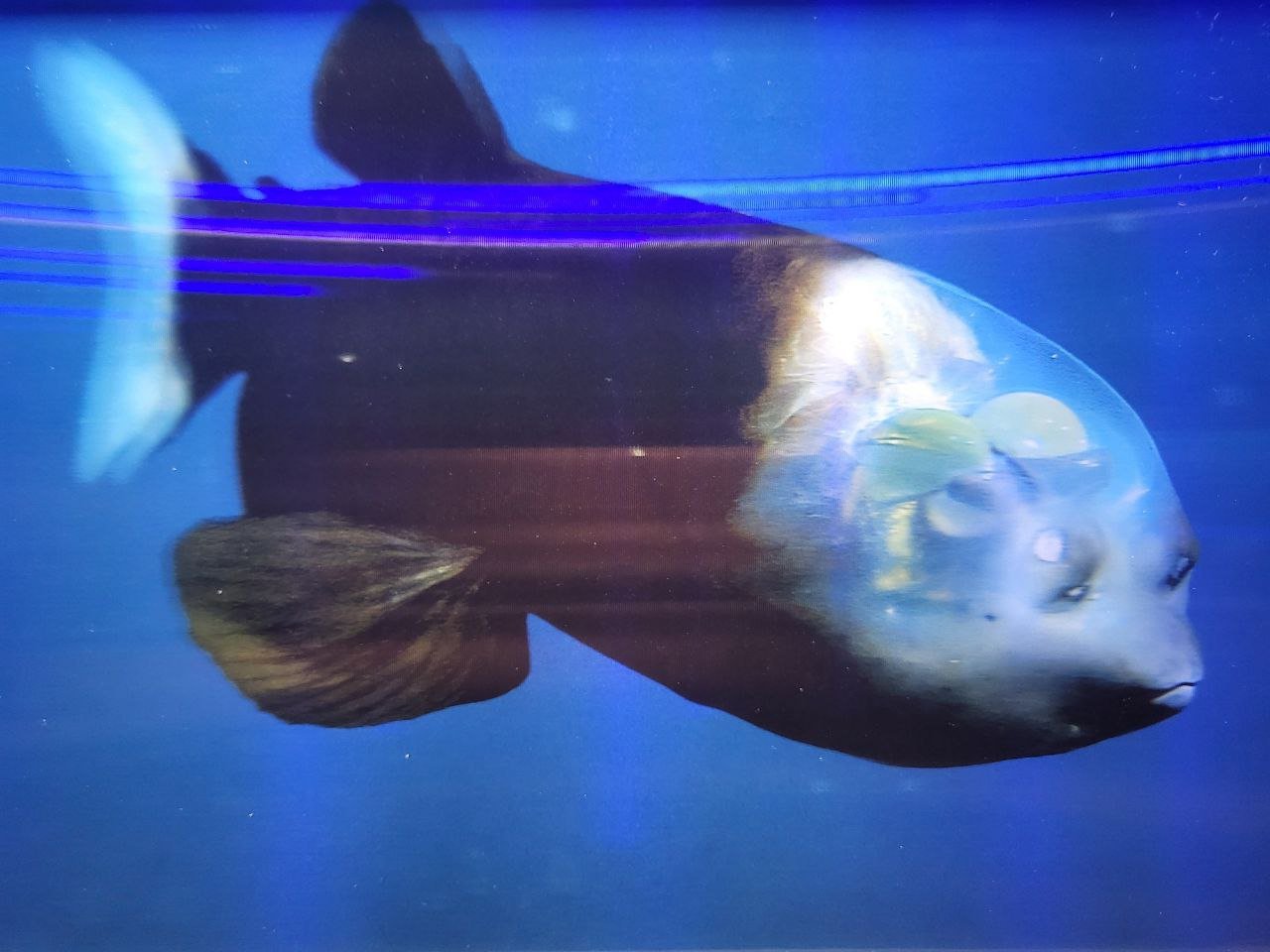
At first glance, the fish seems assembled from spare parts: a transparent forehead, a small mouth, and fins that act more like stabilizers than paddles. The clear cranial dome isn’t a gimmick; it’s a viewing bubble that protects sensitive eyes while letting them collect every photon that drifts down from above. In a realm where day never comes, that tiny edge decides who eats and who fades into the dark. Those eyes point straight up by default, scanning for the silhouette of prey outlined against the faint glow filtering from the surface.
I remember my first time watching the footage; it felt like the animal noticed the camera and decided to hold still, as if posing for a passport photo from another world. Then, with a subtle pivot, the eyes rotated forward inside the dome, as if the fish had raised a visor to look straight at us. That quiet movement rewrites the story told by preserved specimens, which never showed the intact dome or the full range of motion. Seeing the system in action makes the design feel less bizarre and more inevitable, a perfect answer to a difficult problem.
From Nets to Robots: How We Finally Saw It
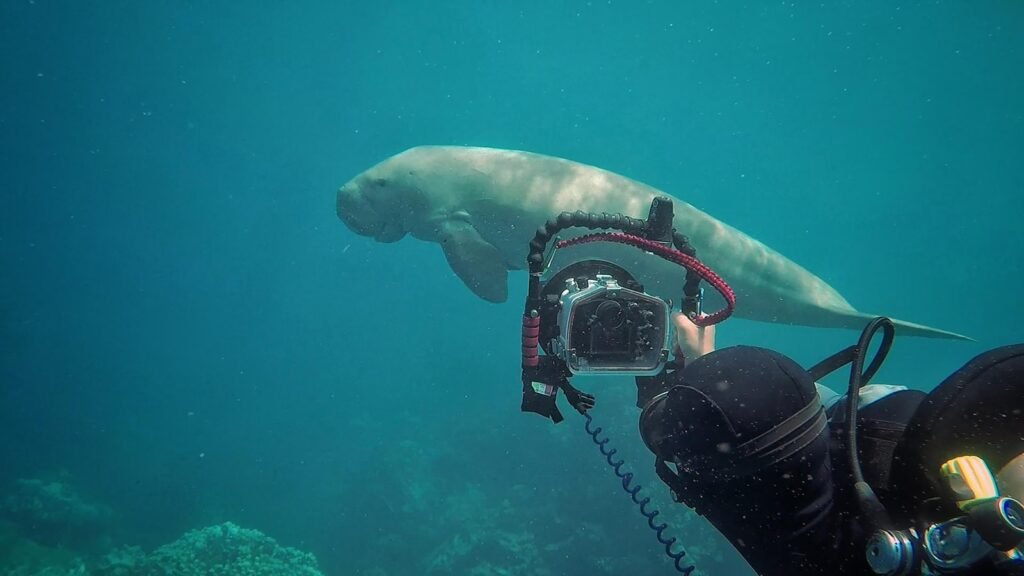
For much of the twentieth century, deep-sea biology relied on nets that hauled creatures up like archaeological fragments. The fish’s delicate head dome often collapsed during ascent, leaving researchers with a mystery: eyes that made sense only if you could see how they were housed. The arrival of remotely operated vehicles changed the rules, letting scientists film and study fragile animals without removing them from their world. Suddenly, the oddball from old field notes appeared in high resolution, suspended in black water and behaving like a stealthy balloon with a plan.
Everything clicked once we watched it alive. The large, paddle-like fins allowed almost motionless hovering, a critical skill near gelatinous animals whose stinging tentacles can turn a meal into a minefield. Researchers could now track behavior in situ, correlate movements with nearby prey, and observe how the eyes swivel from skyward to forward when the fish lines up a target. That leap – from broken artifacts to living evidence – did more than confirm a legend; it opened a chapter in how to read the midnight zone on its own terms.
The Vision Puzzle: Tubular Eyes in a Glassy Dome
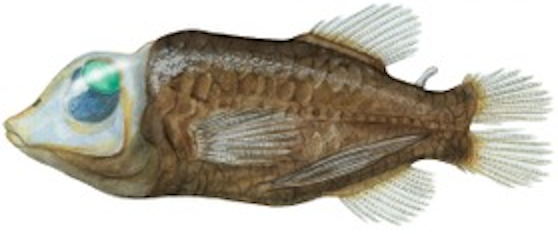
The Vision Puzzle: Tubular Eyes in a Glassy Dome (image credits: Wikimedia)
The fish’s tubular eyes are long, narrow detectors optimized for gathering scarce light, like a pair of night-vision scopes in miniature. Pigments inside the eyes filter out scattered wavelengths, sharpening contrast so faint bioluminescent glows stand out against the dark. The transparent dome works as both armor and optical window, shielding the eyes from pressure and stinging cells while preserving their panoramic view upward. When prey moves closer, tiny muscles rotate those tubes forward, aligning the visual axes with the mouth to make the strike more precise.
It’s easy to focus on the spectacle, but the physics is the real star. Light at those depths is mostly blue, and beam paths are short, so every surface and angle matters. By isolating the eyes within a fluid-filled chamber, the fish reduces distortions that would ruin a dim signal. The result is a system built to squeeze meaning from the faintest hint of brightness, turning darkness into usable information.
Hunting in the Midnight Zone
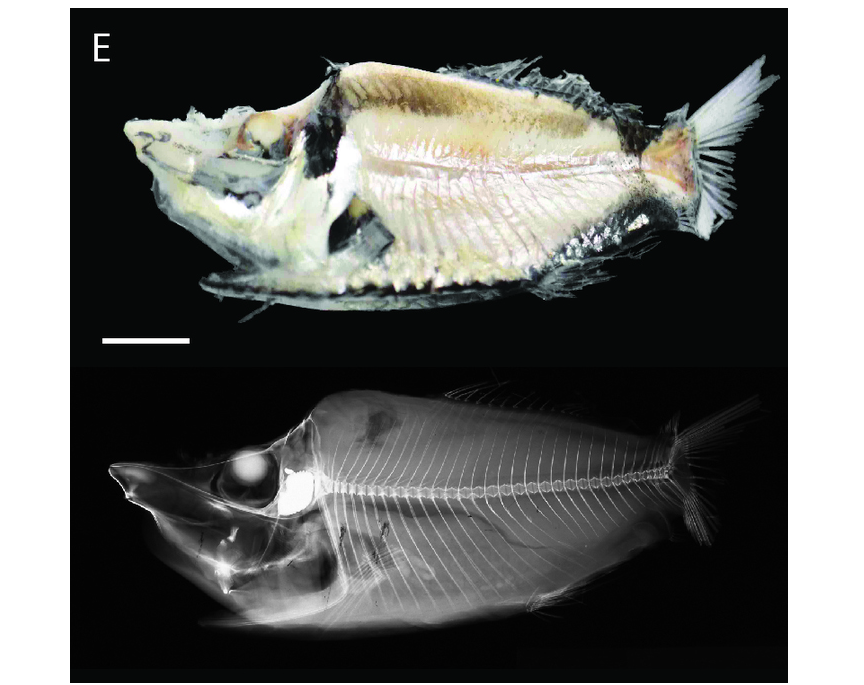
The fish spends much of its time near drifting colonies of gelatinous animals, where tiny crustaceans, larval fishes, and other plankton gather like commuters at a floating station. It hovers with impressive control, fin tips twitching just enough to counter small currents without creating turbulence that could spook prey. The small mouth hints at selective feeding rather than lunging at anything that moves, which fits with a strategy built on careful targeting and conserving energy. The dome likely doubles as a face shield when the fish reaches into stinging tentacles to nab a snack.
That style might sound slow, but efficiency wins in the deep. Food is patchy, and mistakes are expensive, so the fish avoids waste by reading the scene before committing. It’s the opposite of sprint hunting; think chess, not tag. Each eye rotation is a tiny wager that the next move will bring a faint silhouette into strike range.
Why It Matters
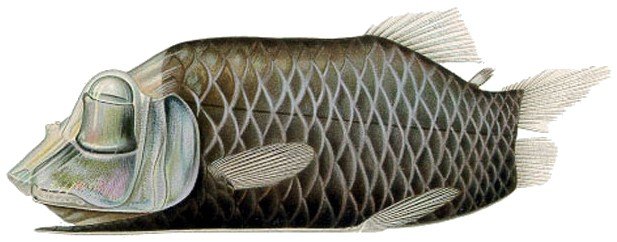
This fish challenges the idea that deep-sea life is uniformly drab or simplified by darkness. Instead, it showcases how extreme environments spark extreme solutions – here, a transparent head paired with rotatable, high-sensitivity eyes. That combination teaches engineers about low-light imaging, glare reduction, and compact optical alignment, all of which are relevant to cameras, drones, and medical scopes. It also refines ecological models by revealing who eats whom and how energy moves through the open ocean’s dim corridors.
Traditional net sampling once suggested a rarity on the brink of myth; noninvasive video shows a specialist that simply escapes capture by being delicate and precise. The shift from destructive collection to patient observation mirrors changes across ocean science, where watching behavior can be as informative as counting specimens. In practical terms, better data means smarter protections for zones where gelatinous prey and picky predators rendezvous. Without these insights, management plans risk protecting empty water while missing the places that actually matter.
Global Perspectives
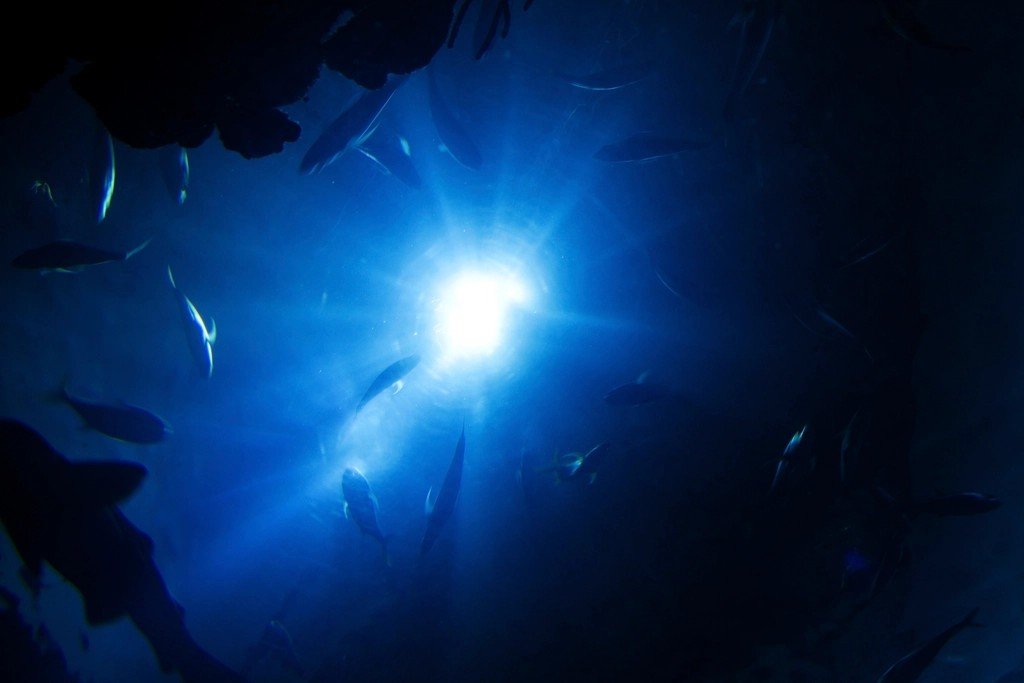
Although the fish is best known from the North Pacific, its story resonates far beyond any single basin. Huge swaths of the world’s ocean fall into the same dim band – deep enough to extinguish daylight, yet shallow enough for drifting life to pulse with seasonal rhythms. Many midwater species likely share the same constraints: sparse food, patchy habitats, and a premium on sensory accuracy. Studying this one specialist helps us rebuild expectations for the many others that rarely meet a camera.
There is a human angle here too. Nations now weigh how to balance open-ocean commerce, conservation, and science in waters where borders blur and responsibility is shared. Accurate knowledge of midwater food webs feeds into discussions about fishing limits, bycatch rules, and the knock-on effects of climate-driven changes in oxygen and temperature. The clearer we see these animals, the less we’re tempted to treat the deep sea as a blank slate.
The Habitat Map

The Habitat Map (image credits: Wikimedia)
The fish thrives where faint surface light still threads downward, typically from 400 to 2,500 meters below the waves, most commonly between 600-800 meters. These depths are shifting patchworks, structured by layers of temperature, salinity, and oxygen that rise or fall with seasons and climate cycles. In years when oxygen-poor waters expand, animals sensitive to low oxygen can be pushed into narrower bands, compressing communities and forcing new overlaps. For a hover-hunter that counts on precision, even subtle shifts change the odds of finding prey.
Linking behavior to these moving layers is the new frontier. Long-term camera surveys, paired with environmental sensors, can track how the fish responds to changes in the water column. If its sightings drift up or down with oxygen lines or temperature steps, that becomes an early signal of larger ecosystem shifts. One midwater fish, in other words, can act as a sensitive needle on an oceanic gauge.
The Future Landscape
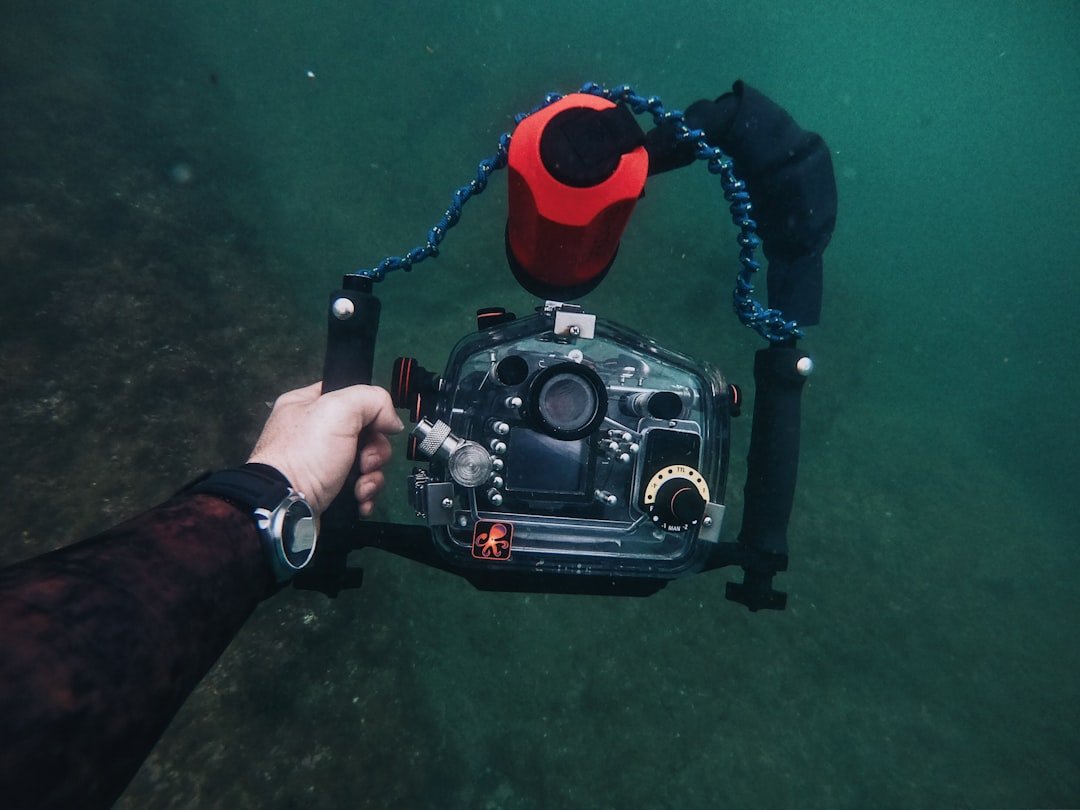
Tools are evolving almost as fast as the questions. Ultra-sensitive cameras, machine-learning detection, and autonomous vehicles now comb the dark with a patience no human pilot can match. Environmental DNA lets scientists detect a species from fragments left in the water, offering clues even when cameras miss the encounter. Together, these approaches can turn rare glimpses into robust patterns: where the fish clusters, when it rises or falls, and how it chooses its gelatinous hunting grounds.
The challenge is to scale discovery without adding harm. As industries eye the deep for minerals or new fishing grounds, the margin for error shrinks, especially for fragile species that don’t handle disturbance well. Science will need open data, shared platforms, and international standards to keep observation ahead of exploitation. If we can map the invisible with care, the ocean may keep revealing its tricks without losing them.
Conclusion
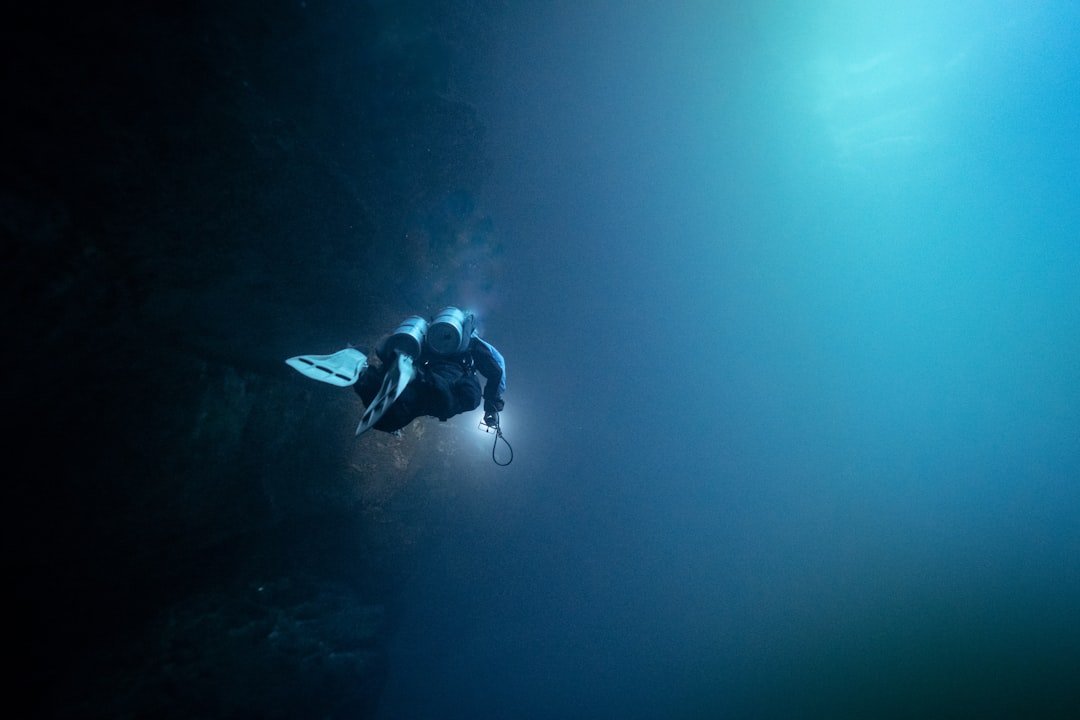
You don’t need a submersible to make a difference. Support institutions that deploy low-impact exploration tools, from local aquariums with deep-sea programs to nonprofit research groups that share footage and data. Encourage policies that prioritize midwater monitoring, not just seafloor mapping, so the living layers between get the attention they deserve. Stay curious and share credible deep-sea science; public interest helps keep cameras rolling and budgets afloat.
If you work in tech or education, consider collaborations that translate deep-sea optics into classroom kits or new imaging designs. And for everyone else, remember that careful observation – waiting, watching, learning – matters at every scale, from a backyard tide pool to a camera staring into black water. Curiosity, backed by evidence, is the best light we have.

Suhail Ahmed is a passionate digital professional and nature enthusiast with over 8 years of experience in content strategy, SEO, web development, and digital operations. Alongside his freelance journey, Suhail actively contributes to nature and wildlife platforms like Discover Wildlife, where he channels his curiosity for the planet into engaging, educational storytelling.
With a strong background in managing digital ecosystems — from ecommerce stores and WordPress websites to social media and automation — Suhail merges technical precision with creative insight. His content reflects a rare balance: SEO-friendly yet deeply human, data-informed yet emotionally resonant.
Driven by a love for discovery and storytelling, Suhail believes in using digital platforms to amplify causes that matter — especially those protecting Earth’s biodiversity and inspiring sustainable living. Whether he’s managing online projects or crafting wildlife content, his goal remains the same: to inform, inspire, and leave a positive digital footprint.

